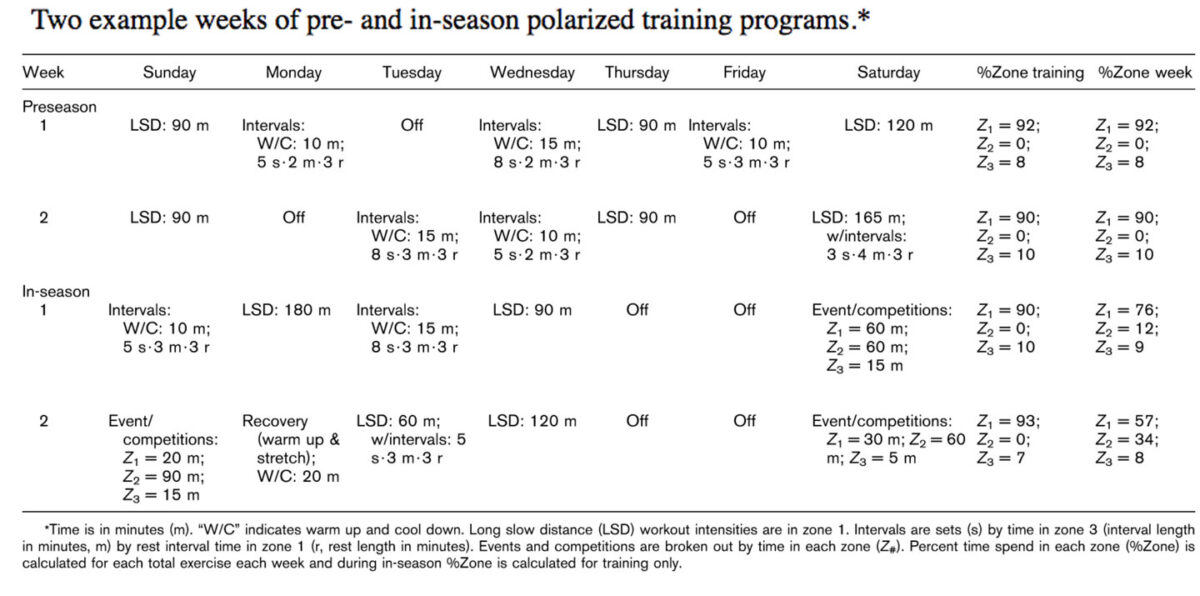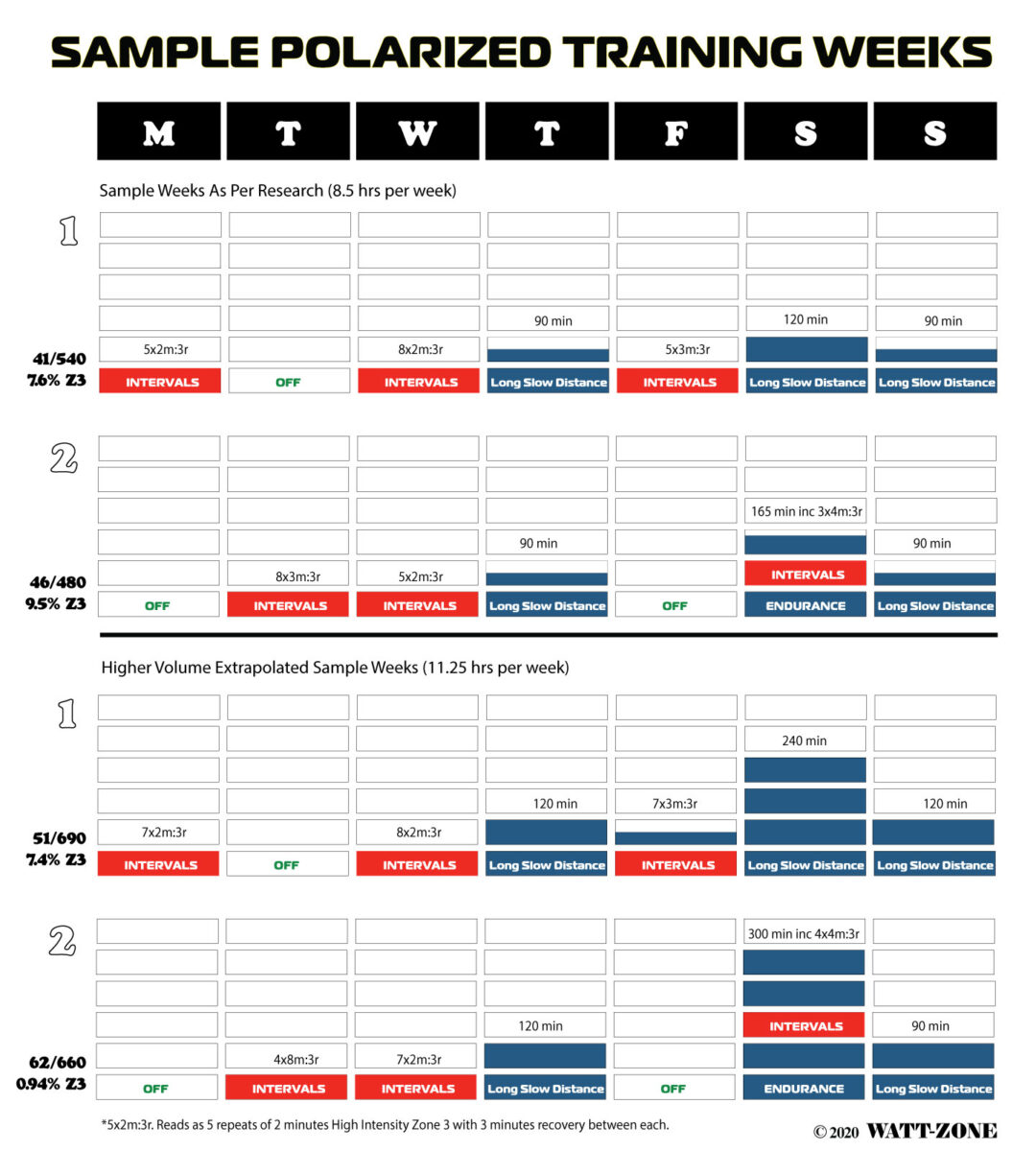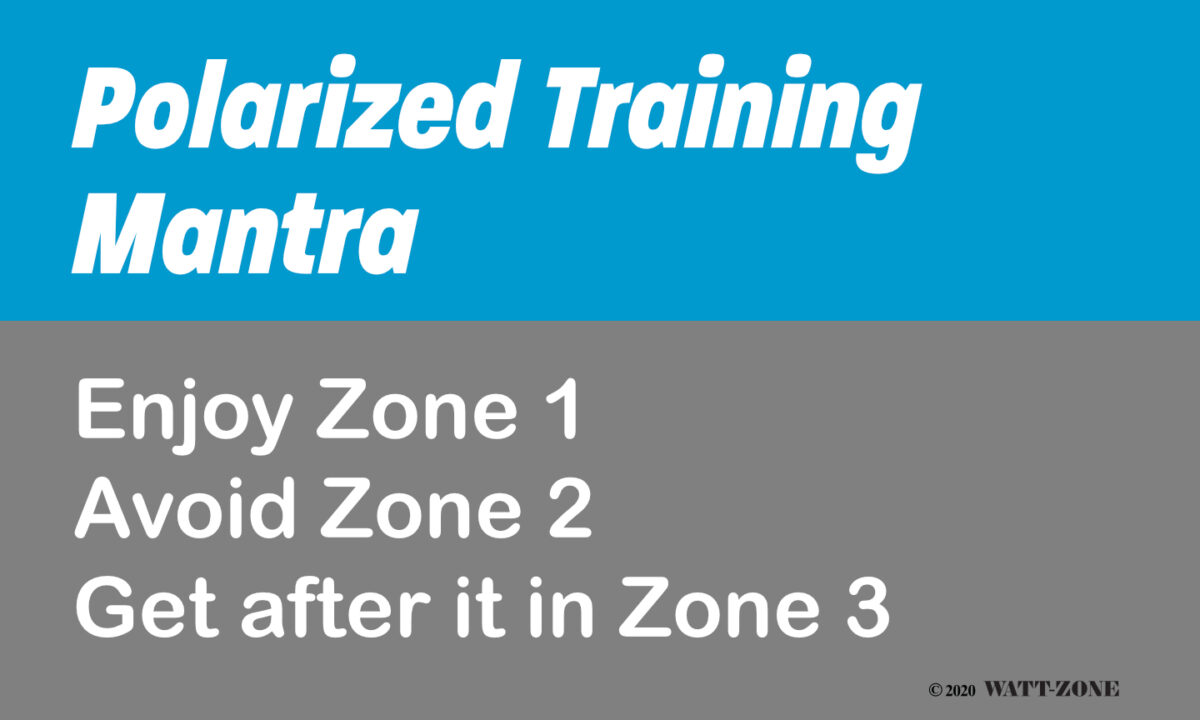This review, “Evidence For A Polarized Cardiovascular Endurance Training”, Hydren and Cohen show that polarized training has a small but promising body of literature reporting its efficacy. A summary of 5 experimental studies, conducted since 2006, provides strong scientific evidence for polarized training (POL).
The studies consistently show effect size (magnitude of change) for increasing aerobic endurance performance for POL to be consistently superior to that of threshold training (THR). In the cycling-specific study by Neal et al, this held true with a positive effect size for both aerobic and anaerobic threshold power, peak power output, and 40km Time Trial performance greater for POL than THR.
Whilst this review’s title focuses on supporting the concept of POL. It also looks into some key aspects of POL.
This research also notes that “reducing high-intensity exercise volume is linked to a lower overall injury rate,” and it is inferred that a polarized training may result in a lower injury rate, and less chance of overreaching and overtraining, than threshold-based training. Given that THR training can have up to 40% of training time spent in Zone 2, one can see how this idea could hold true. Obviously, in the long term, having fewer injuries would lead to greater endurance performance.
There are many questions on how to best perform POL, and the specific intensity of intervals is a common concern. Within Zone 3 of a polarized training model, there is a large range of possible intensities to train. Hydren and Cohen point to a study by Edgett et al that suggests training at 100% of VO2 max may optimize the upstream signaling of PGC-1⍺ needed to increase the mitochondrial volume within muscle fibers, in preference to higher and lower intensities.
Hydren and Cohen go out of their way to set out non-sport specific sample weeks of POL that can be used as a scalable base to apply to one’s particular sport. When planning POL training careful attention to total duration, and the summation of minutes spent in each zone is important. Analyzing their sample weeks shows 7-10% Zone 3 training time compared to total training time.

In the table below the first 2 weeks represent the preseason sample (8.5 hours training per week) in a more visually appealing layout. The 2nd 2 weeks represent the preseason sample expanded to what might more typically represent the training volume of a keen recreational cyclist (11.25 hours of training a week).

Interestingly in their pre-season weeks they have 3 interval sessions per week, rather than 2, which is often recommended. An interval workout is also included within a Long Slow Distance session in the second week.
Hydren and Cohen summarize with the following mantra.

If you are a polarized training convert, these are words to live by.
REFERENCE: Hydren, Jay, R, and Cohen, Bruce ,S . Current Scientific Evidence For A Polarized Cardiovascular Endurance Training Model. Journal Of Strength and Conditioning Research, 2015.
Edgett, B. A., Foster, W. S., Hankinson, P. B., Simpson, C. A., Little, J. P., Graham, R. B., and Gurd, B. J., Dissociation of increases in PGC-1alpha and its regulators from exercise intensity and muscle activation following acute exercise. PLoS One 8: e71623, 2013. { https://journals.plos.org/plosone/article?id=10.1371/journal.pone.0071623 }
Neal, C. M., Hunter, A. M., Brennan, L., O’Sullivan, A., Hamilton, D, L., De Vito, G., et al. (2013). Six weeks of polarized training-intensity distribution leads to greater physiological and performance adaptations than a threshold model in trained cyclists. Journal of Applied Physiology.

